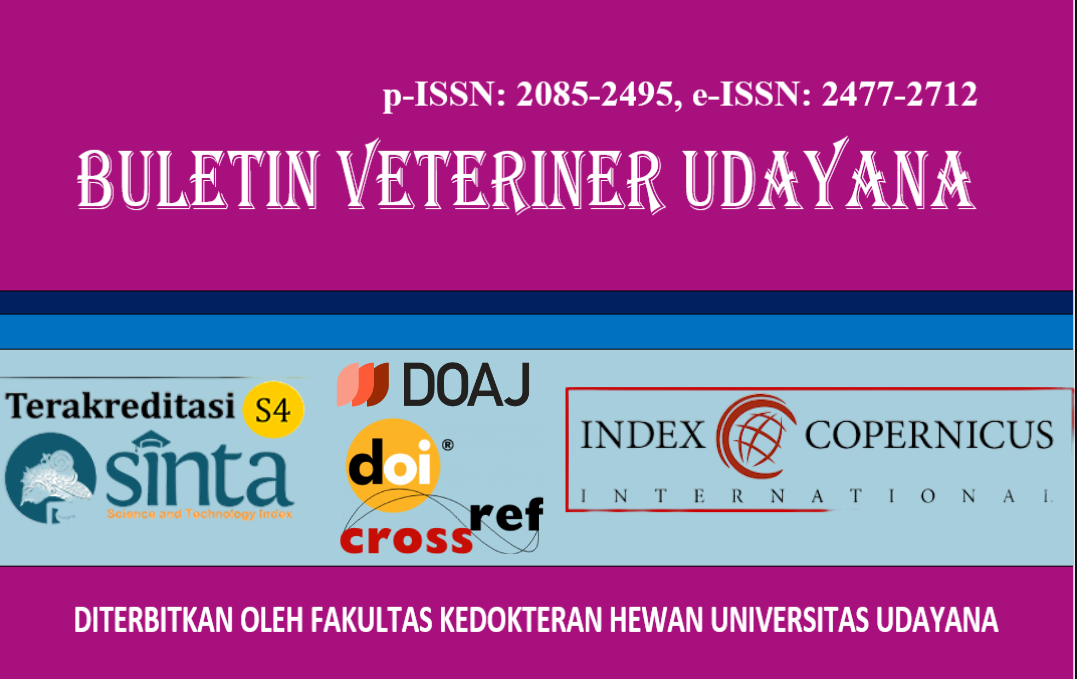IMPLEMENTATION OF ANIMAL WELFARE PRACTICES AMONG LAYER FARMERS IN PUHU AND PERING VILLAGES IN GIANYAR REGENCY
DOI:
https://doi.org/10.24843/bulvet.2024.v16.i3.p13Keywords:
animal welfare, implementation, layer henAbstract
Laying hens are chickens that are raised with the aim of producing eggs with high productivity. In order to maximize the productivity of laying hens, many farmers use a battery cage system. Battery cages actually implement poor welfare due to extreme confinement and restrictions on chicken behavior. This study aims to determine the application of animal welfare on layer farms in two villages with different altitudes. Pering village located in lowland and Puhu village located in highland. The data collection method used a questionnaire by conducting interviews with layer farmers. Data were analysed descriptive quantitatively and Mann Whitney comparison test was conducted to compare data between sampling villages. The results of the analysis showed that there were significant differences in the application of the concept of freedom from discomfort and the application of the concept of freedom to express natural behavior. It can be concluded that there is a significant difference in the application of the five freedom principles between the two villages. The researcher suggested to the farmers in Puhu village to start trying the free cage method which in principle is more prosperous for the chickens.




